
A cocktail is a mixed drink, usually alcoholic. Most commonly, a cocktail is a combination of one or more spirits mixed with other ingredients, such as juices, flavored syrups, tonic water, shrubs, and bitters. Cocktails vary widely across regions of the world, and many websites publish both original recipes and their own interpretations of older and more famous cocktails.
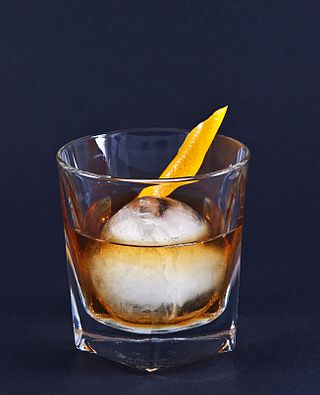
The old fashioned is a cocktail made by muddling sugar with bitters and water, adding whiskey or sometimes brandy, and garnishing with an orange slice or zest and a cocktail cherry. It is traditionally served with ice in an old fashioned glass.
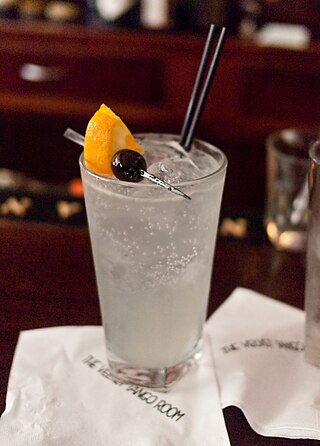
The Tom Collins is a Collins cocktail made from gin, lemon juice, sugar, and carbonated water. First memorialized in writing in 1876 by Jerry Thomas, "the father of American mixology", this "gin and sparkling lemonade" drink is typically served in a Collins glass over ice with a cherry garnish. A non-alcoholic "Collins mix" mixer is produced, enjoyed by some as a soft drink.
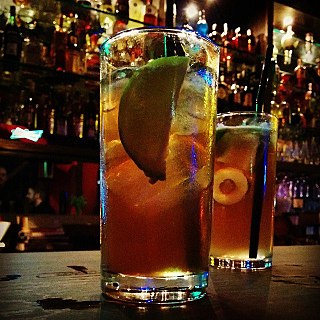
The Long Island iced tea, or Long Island ice tea, is an IBA official cocktail, typically made with vodka, tequila, light rum, triple sec, gin, and a splash of cola. Despite its name, the cocktail does not typically contain iced tea, but is named for having the same amber hue as iced tea.

A bartender is a person who formulates and serves alcoholic or soft drink beverages behind the bar, usually in a licensed establishment as well as in restaurants and nightclubs, but also occasionally at private parties. Bartenders also usually maintain the supplies and inventory for the bar. As well as serving beer and wine, a bartender can generally also mix classic cocktails such as a Cosmopolitan, Manhattan, Old Fashioned, and Mojito.
The Pendennis Club is a private social club located at 218 West Muhammad Ali Boulevard in Louisville, Kentucky. It originated as a gentlemen's "city" club on the model of the clubs in London, Britain, of which White's Club founded in 1693 is the progenitor. The Pendennis Club has long been regarded as the preeminent social club in Kentucky and one of the premier clubs in the United States.
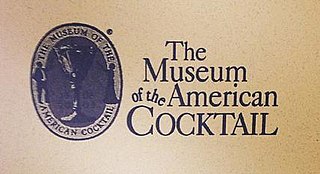
The Museum of the American Cocktail, based in New Orleans, Louisiana, is a nonprofit organization dedicated to education in mixology and preserving the rich history of the cocktail as developed in the United States. Among its events are tastings in association with specific seminars or exhibits. It annually presents the American Cocktail Awards, together with the United States Bartenders Guild.
The brandy daisy is a cocktail which first gained popularity in the late 19th century. One of the earliest known recipes was published in 1876 in the second edition of Jerry Thomas's The Bartenders Guide or How To Mix Drinks: The Bon-Vivants Companion:
Fill glass half full of shaved ice. Shake well and strain into a glass, and fill up with Seltzer water from a syphon.

The Ward 8 or Ward Eight is a cocktail originating in 1898 in Boston, Massachusetts, at the bar of the Gilded Age restaurant Locke-Ober.

Mr. Boston, previously Old Mr. Boston, was a distillery located at 1010 Massachusetts Avenue in Boston, Massachusetts, from 1933 to 1986. It produced its own label of gin, bourbon, rum, and brandies, as well as a few cordials and liqueurs.

The pink lady is a classic gin-based cocktail with a long history. Its pink color comes from grenadine.
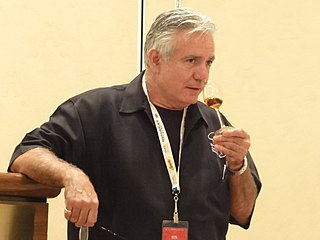
Dale DeGroff, also known as "the King of Cocktails" or "King Cocktail", is an American bartender and author. The New York Times in 2015 called DeGroff "one of the world's foremost cocktail experts", and wrote that his book The Craft of the Cocktail is considered an essential bartending reference. From 1987 to 1999 DeGroff rose to prominence as the original chief bartender in the Rainbow Room at Rockefeller Center in New York City, where his then-unusual emphasis on classic cocktail recipes and high-quality ingredients led to substantial acclaim and emulation by many other bars in New York City and beyond, and helped influence the creation of the craft cocktail movement.

A rum swizzle is a rum-based cocktail often called "Bermuda's national drink". The Royal Gazette has referred to it as "the legendary Sam swizzle...perfect for sharing and irresistible to locals and tourists alike". In addition to providing the "swizzle" portion of the 1933 swizzle stick product name, it has been said that this potent cocktail is "as much a part of Bermuda Island culture and cuisine as is the Bermuda onion, the vibrant hibiscus, or the graceful Bermuda Longtail."
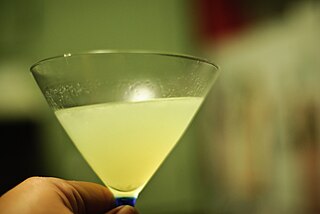
The Last Word is a gin-based cocktail originating at the Detroit Athletic Club in the 1910s, shortly before the start of Prohibition. After a long period of obscurity, it enjoyed a renewed popularity in the cocktail renaissance of the early 2000s after being discovered by bartender Murray Stenson of the Zig Zag Café in Seattle.

The Martinez is a classic cocktail that is widely regarded as the direct precursor to the Martini. It serves as the basis for many modern cocktails, and several different versions of the original exist. These are generally distinguished by the accompaniment of either Maraschino or Curacao, as well as differences in gin or bitters.
Tom Bullock (1872–1964) was an American bartender in the pre-Prohibition era. He was an African-American person.
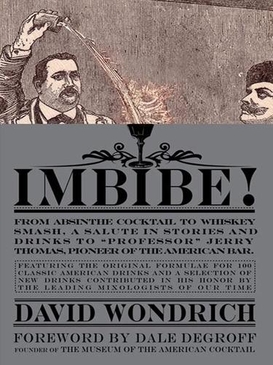
Imbibe! is a book by the cocktail historian David Wondrich. It was first published in November 2007 by Perigee Books.

Zig Zag Café is a craft cocktail bar and restaurant in Seattle, Washington. Established in 1999, the bar is considered one of the best in the United States, helping lead the craft cocktail movement. From 2002 to 2011, noted bartender Murray Stenson worked at Zig Zag Café, and created innovative cocktails as well as reintroduced the pre-Prohibition-era Last Word cocktail to the public and to bars around the world.

The craft cocktail movement is a social movement spurred by the cocktail renaissance, a period of time in the late 20th and early 21st century characterized by a revival and re-prioritization of traditional recipes and methods in the bar industry, especially in the United States. The renaissance was followed by innovation and new techniques, and the movement has spread globally, now forming part of global cuisine.

The Oxford Companion to Spirits & Cocktails (OCSC) is a book in the series of Oxford Companions published by Oxford University Press. The book provides an alphabetically arranged reference to spirits, cocktails and other elements of the bar industry, compiled and edited by David Wondrich and Noah Rothbaum, with contributions by several writers including Doug Frost, Garrett Oliver and Audrey Saunders. Also notably contributing to the book is pioneering bartender Dale DeGroff. The work is considered the first reference book on the history and trends of distilled spirits.


















